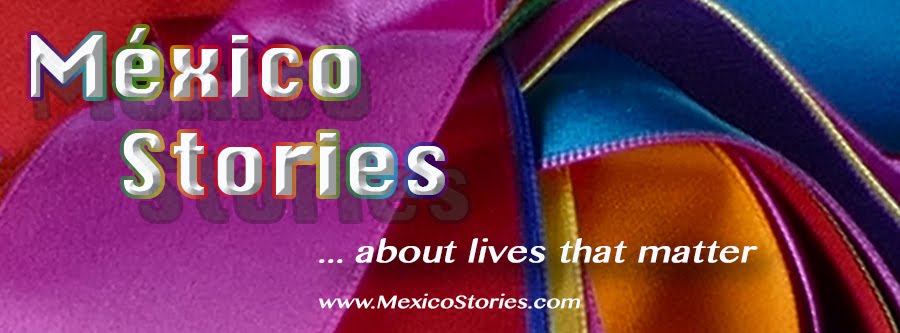 |
A glimpse of the Fiesta de Cristo Rey |
It was a stunning, flower-filled trip in all ways. Wild flowers were everywhere and we could have added days to our trip if we had stopped at every field of vibrant color. However, we were on a mission to get to Patamban for the Fiesta de Cristo Rey, the day when Christ was embraced as the son of God.
 |
| Patamban Fiesta |
 |
| Patamban Circle |
We were lucky enough to have Xill Fessenden as our leader. Xill has lived in Mexico for 33 years and started the Purépecha festival that is held in Ajijic. (The next one will be in 2019.) She seems to know everyone and everything about this part of the world. On the way back, she wanted to show us the church with painted ceilings in Nurio but it was closed.
Some of the indigenous towns have loud speakers that function somewhat like the internet or Facebook. Not long after we arrived, we heard words booming across the village. The language was Purépecha so we didn't understand anything except ... words, words, Julia, words, words, words, Julia. Repeated several times. Turns out that Xill goes by Julia in the villages and they were announcing her arrival and telling everyone that she wanted someone to open the church. Soon, someone arrived and did just that. Everywhere she went, doors opened and we experienced things that we wouldn't have been able to without her. Thanks, Xill! (She is a Wonder Woman and you can read more about her here.)
Our plan was to have lunch at Lake Camécuaro and then go on to Patamban for the fiesta. I could have stayed forever at that incredibly beautiful, spring-fed lake surrounded by an ancient ahuehuetl (cypress) grove. There will be a separate post about this place, but here's a peek.
 |
| Lunch at Lake Camécuaro |
"... although Patamban's parade and all of its preparations have religious connotations it should be explained that there is no historical significance to the event. If anything, the reason for the Fiesta is economic. Rather than originating 500 years ago, it is just over 50 years old and is done to attract people and money to the town. In that regard, I would say it was an outstanding successful." (Written in 2001)We knew it would be crowded so we weren't surprised when traffic began to creep past hundreds of tiendas that formed the mercado on both sides of the road. We had to park a couple of kilometers from our base destination ... a family Xill is friends with and who were preparing dinner for us and providing a place to rest in between outings.
 |
| Beautiful country seen from our hosts' roof |
One of the things that intrigued me was the many alternatives to papel picado they created.
Here are some of the people we met on the trip.
 |
| Cooking blue corn quesadillas for us |
 |
| Our hostess |
When traveling companion Maureen Clark asked this woman if she could take her picture, the woman suggested a trade ... a picture for a soda. We couldn't get to a store but she accepted a few pesos. With that smile, I'm sure she would have let us take the picture anyway.
 |
 |
| Such amazing handwork |
 |
| Bottling golden honey |
These bikers wanted their photos taken and the one in the green vest spent a lot of time trying to help me to pronounce Lake Camécuaro properly. Young Mexican men are always very sweet to little old ladies.
 |
| And, of course, the children |
A tienda in the street. This is a one day festival so all this merchandise has to be set up in the morning and then taken down at night. A long day for these people.
 |
| A sense of how crowded it was |
And, of course, how would any of this happen without power?
“People of our time are losing the power of celebration. Instead of celebrating we seek to be amused or entertained. Celebration is an active state, an act of expressing reverence or appreciation. To be entertained is a passive state--it is to receive pleasure afforded by an amusing act or a spectacle.... Celebration is a confrontation, giving attention to the transcendent meaning of one's actions."
― Abraham Joshua Heschel
More information:






































